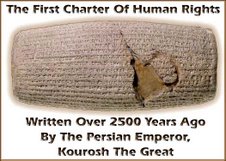
Introduction
The representation of black people in advertising and commercial products has changed over the past century. London's Black Cultural Archives has documented how black people have been portrayed in every day objects and how that representation has changed with society.

Soap and slavery
In the early years of the 20th Century, the only images of black people in advertising were those related to slavery and service. Two controversial images that remain are the figures on Uncle Ben's Rice and Aunt Jemima's pancake mix (a US breakfast product). Both are well-known brands, but some race campaigners say the images are still associated with stereotypes of black servants.

Whiter than white
Black faces often appeared only to emphasise their difference from white people. This Pears Soap advertisement from 1903 suggests the product is powerful enough to "clean" a black child. "The suggestion was that being black was unclean," says Sam Walker of the Black Cultural Archives. "It reinforced the idea that being black was negative, not least to children who may have seen this."

Out of Africa
Another image was that of the African native or savage. This snakes and ladders game shows a man being chased in the African savannah. "In later years this idea of black people running around Africa reappeared when sportsmen and women were posed next to lions or other animals," says Sam Walker.

Positive portrayal begins
The first products to emerge with positive black representation were in the cosmetics industry. Black people either set up their own companies or were targeted by cosmetics firms which were developing new products. In advertising terms, the idea that black is just as beautiful as white was a revolution in thinking.

Appealing to the family
Positive images increasingly appeared in glossy magazines and in products aimed at ordinary people. This Kellogg's Corn Flakes box is an example of how black figures began to appear in the same family scenarios as white people. In 1976, Boeing used a black model in the Sunday Times Colour magazine in an advert aimed at business travellers.

Old habits die hard
Stereotypes did persist. This Kentucky Fried Chicken box (date unknown) recalls slavery with a 19th century American folk song about growing corn:
"The sun shines bright in the old Kentucky home, tis summer, the darkies are gay."

Robertson's Golliwog
The Golliwog first appeared on jars of Robertson's Jam in 1910 and became one of the most recognisable brands in the UK. It spawned a range of toys and collectibles. In the 1980s, the name became Golly amid accusations that the character perpetuated stereotypes. It was finally dropped in 2001.

Subverting imagery
Diesel Jeans has sought to build a name with campaigns presenting the fashion house as a subversive force. In 2001 the company ran a campaign turning history on its head, making Europe and the US the developing world and putting, in this case, black models in positions of power in a stately drawing room.

The man from the Halifax
Remember the Man from the Pru? Now there's Howard Brown of the Halifax Bank, Sheldon, Birmingham. Howard became the face of the bank after he won an in-house audition. "It's perhaps the best example of positive black advertising we've seen," says Sam Walker. "He's there because he's a good salesman of financial products - no other reason."

No comments:
Post a Comment